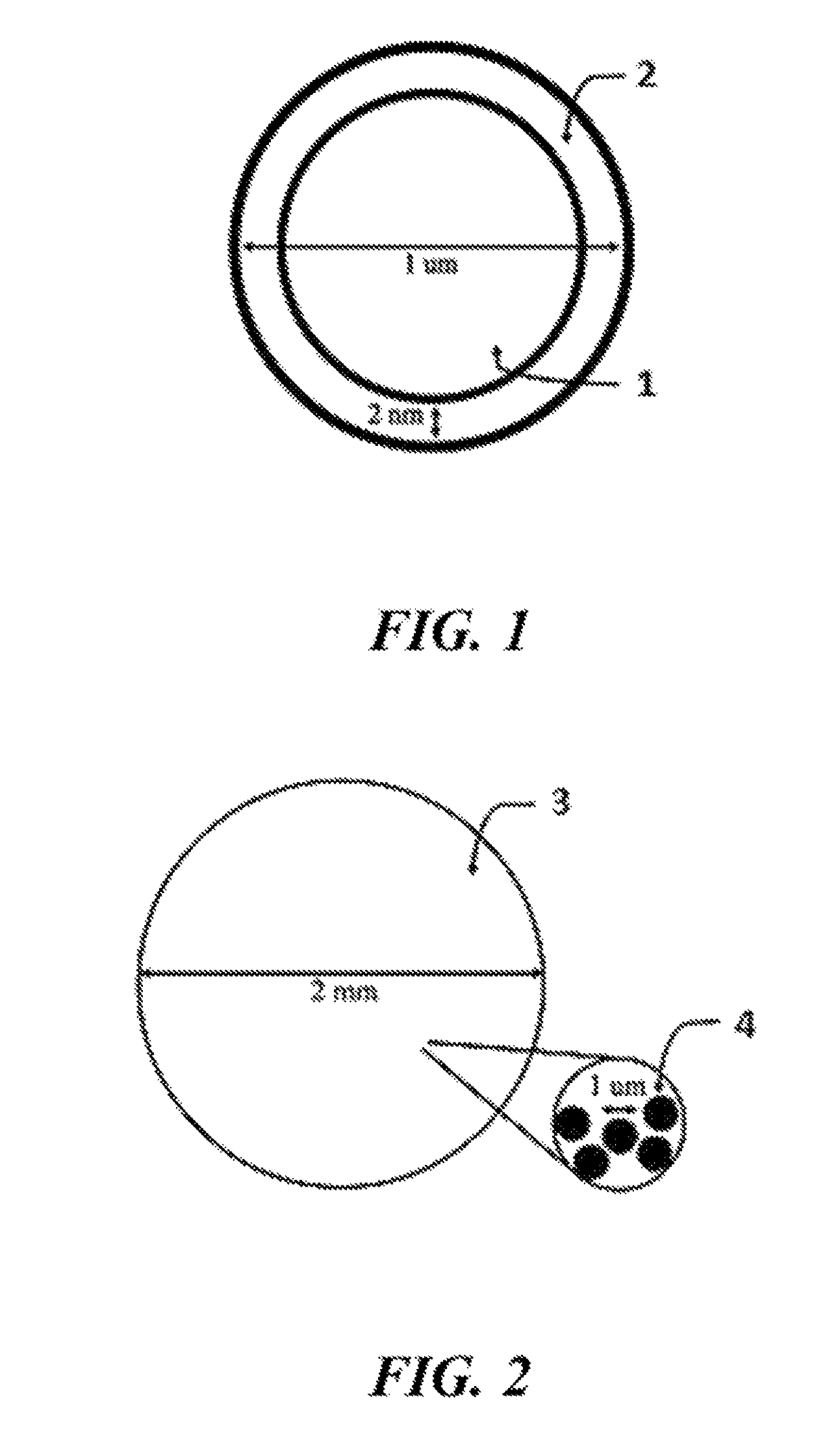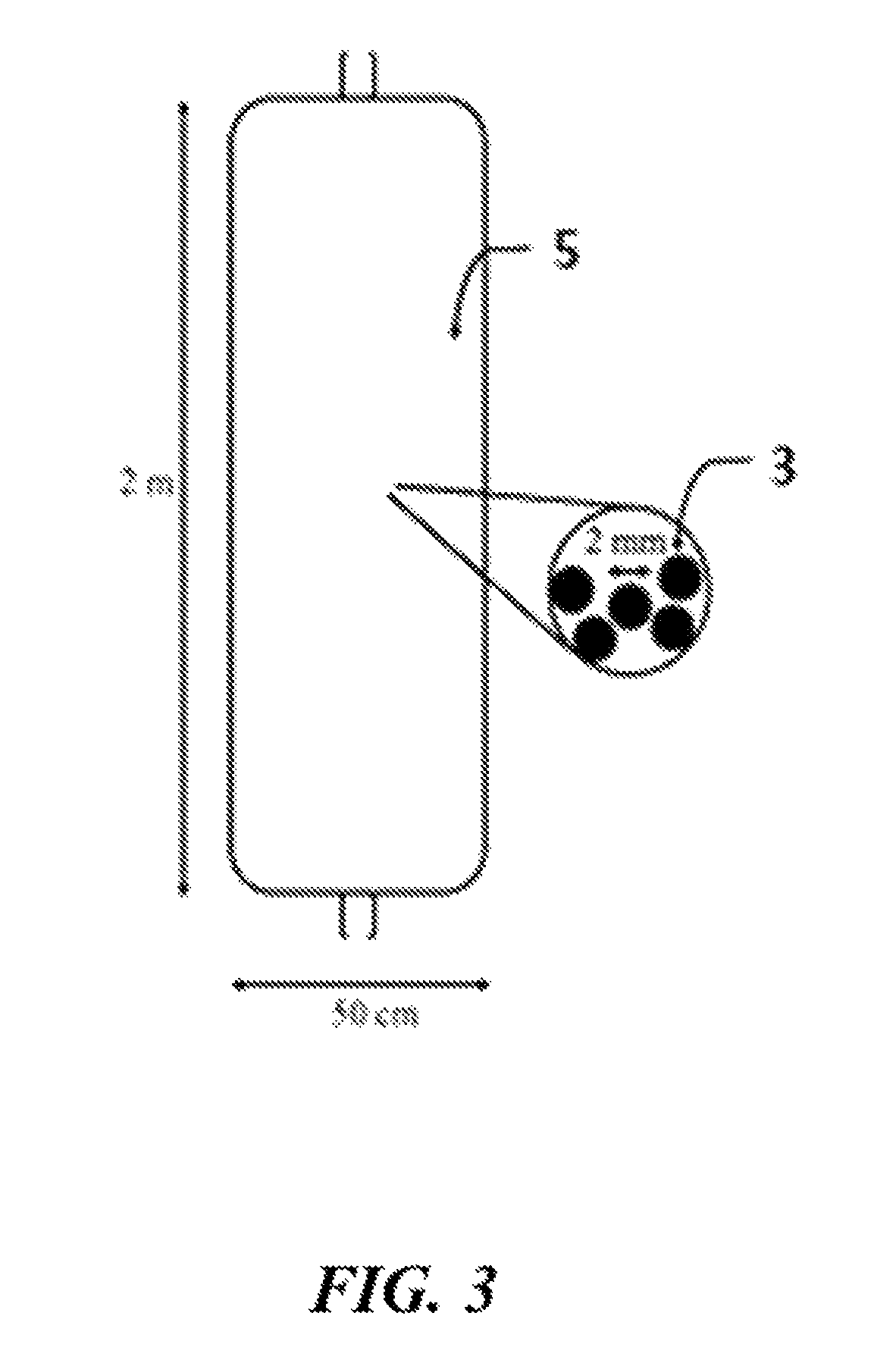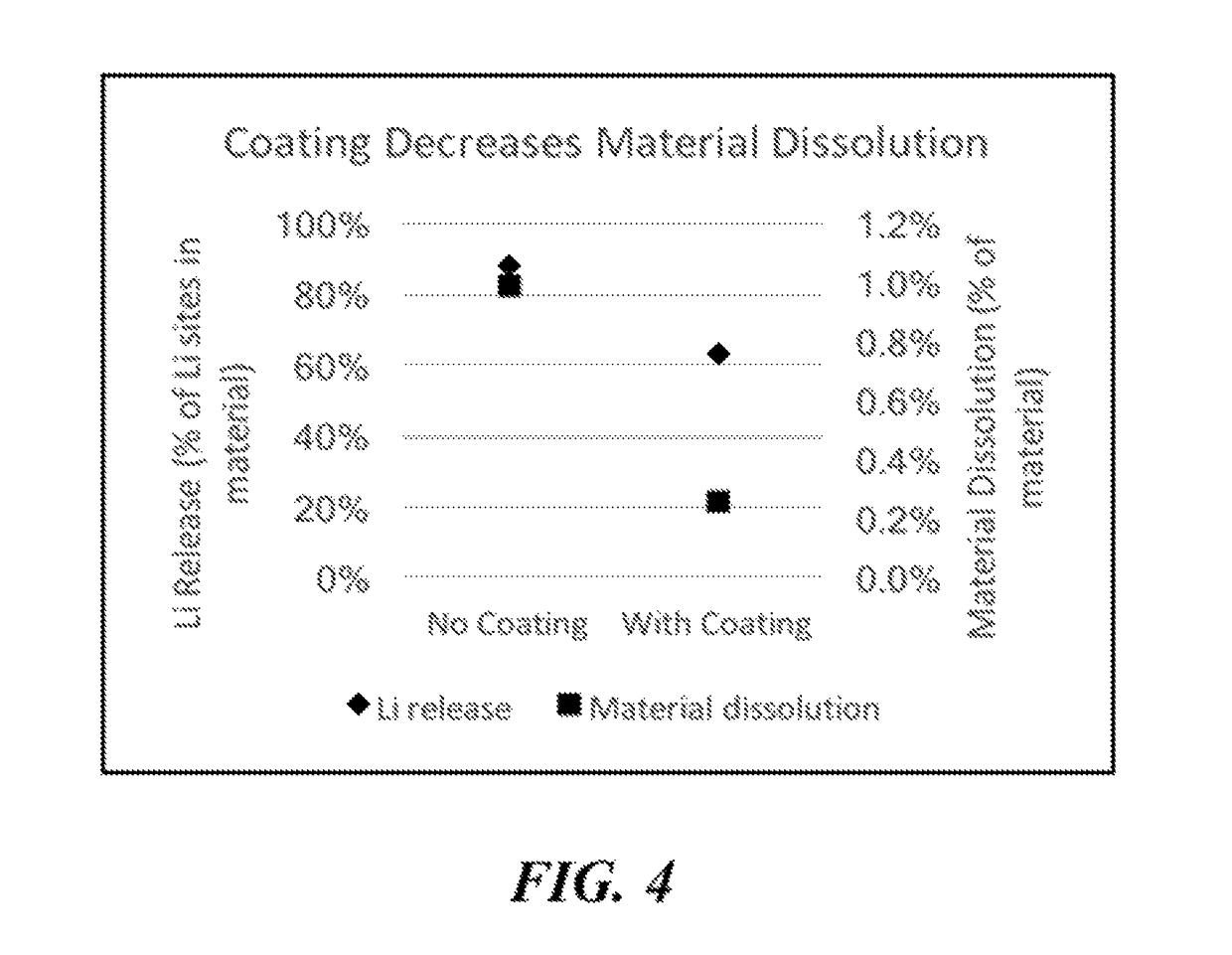Lithium extraction with coated ion exchange particles
a technology of ion exchange particles and lithium, which is applied in the direction of anion exchangers, amphoteric ion exchangers, chemical/physical processes, etc., can solve the problems of material dissolution and degradation, reducing the performance and lifespan of materials,
- Summary
- Abstract
- Description
- Claims
- Application Information
AI Technical Summary
Benefits of technology
Problems solved by technology
Method used
Image
Examples
example 1
Synthesis of Coated Ion Exchange Particles (Li4Mn5O12 / ZrO2)
[0124]The coated ion exchange particles are comprised of an ion exchange material and a coating material. The ion exchange material is Li4Mn5O12 and the coating material is ZrO2. The particles are created by first synthesizing Li4Mn5O12 and then depositing the coating on the surface of the Li4Mn5O12.
[0125]The ion exchange material, Li4Mn5O12 is synthesized using hydrothermal synthesis, solid state synthesis, microwave synthesis or combinations thereof. The coating material (ZrO2) is deposited on the surface of the Li4Mn5O12 using chemical vapor deposition, hydrothermal deposition, solvothermal deposition, sol-gel deposition, precipitation, microwave deposition or by suspending Li4Mn5O12 in a solvent and then adding reagents including metal chloride, metal oxychloride, metal alkoxide, water, acid, base, or combinations thereof. The particles comprise of 98 wt. % ion exchange material (Li4Mn5O12) and 2 wt. % of the coating (Zr...
example 2
Synthesis of Coated Ion Exchange Particles (Li4Mn5O12 / ZrO2)
[0126]The coated ion exchange particles were comprised of an ion exchange material and a coating material. The ion exchange material was Li4Mn5O12 and the coating material was ZrO2. The particles were created by first synthesizing Li4Mn5O12 and then depositing the coating on the surface of the Li4Mn5O12.
[0127]The Li4Mn5O12 ion exchange material was synthesized using a solid-state method from electrolytic manganese dioxide and lithium nitrate precursors. The precursors were ball-milled using 5 mm ZrO2 grinding media for 30 minutes in a planetary ball mill. The resulting mixture was fired in a furnace with a heating rate of 5° C. / min up to 550° C. for 36 hours and then cooled slowly to room temperature. The resulting powder was comprised of Li4Mn5O12 ion exchange material. A ZrO2 coating was deposited on the Li4Mn5O12 ion exchange material. The ion exchange material was suspended in a mixture of butanol, ethanol, and water wit...
example 3
Synthesis of Coated Ion Exchange Particles (Li2TiO3 / SiO2)
[0128]The coated ion exchange particles were comprised of an ion exchange material and a coating material. The ion exchange material was Li2TiO3 and the coating material was SiO2. The particles were created by first synthesizing Li2TiO3 and then depositing the SiO2 coating on the surface of the Li2TiO3.
[0129]The Li2TiO3 powder was synthesized using a solid-state method from titanium dioxide and lithium carbonate precursors. The precursors were ball-milled using 5 mm ZrO2 grinding media for 30 minutes in a planetary ball mill. The resulting mixture was fired in a furnace with a heating rate of 5° C. / min up to 700° C. for 24 hours and then cooled slowly to room temperature. The resulting powder was comprised of Li2TiO3 ion exchange material. A SiO2 coating was deposited on the Li2TiO3 ion exchange material. The ion exchange material was suspended in a mixture of ethanol and water with vigorous stirring, and a mixture of tetraeth...
PUM
| Property | Measurement | Unit |
|---|---|---|
| diameter | aaaaa | aaaaa |
| diameter | aaaaa | aaaaa |
| diameter | aaaaa | aaaaa |
Abstract
Description
Claims
Application Information
 Login to View More
Login to View More - R&D
- Intellectual Property
- Life Sciences
- Materials
- Tech Scout
- Unparalleled Data Quality
- Higher Quality Content
- 60% Fewer Hallucinations
Browse by: Latest US Patents, China's latest patents, Technical Efficacy Thesaurus, Application Domain, Technology Topic, Popular Technical Reports.
© 2025 PatSnap. All rights reserved.Legal|Privacy policy|Modern Slavery Act Transparency Statement|Sitemap|About US| Contact US: help@patsnap.com



